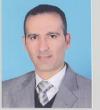Copper
Quantum Chemical Study of Some Triazoles as Inhibitors of Corrosion of Copper in Acid Media
Wed, 2013-03-13 16:07 — Ismail WaradUnderstanding Complexation and Desorption of Copper Ion in Three Contaminated Soil Types in Palestine Using Series of Different Surfactants and Ligands
Sun, 2013-03-03 14:38 — Ahmad A. Abu-ObaidField-Scale Leaching of Arsenic, Chromium and Copper From Weathered Treated Wood
Fri, 2013-02-15 00:01 — Abdel Fattah R. Hasan (Almallah)Understanding Complexation and Desorption of Copper Ion in Three Contaminated Soil Types in Palestine Using Series of Different Surfactants and Ligands
Mon, 2012-12-24 13:08 — Shehdeh JodehRemoval of Dissolved Copper from Polluted Water Using Plant Leaves
Mon, 2011-02-28 12:03 — Ibrahim Diab Abu-ShqairHemolysis of Human Red Blood Cells by Riboflavin-Cu(II) System
Tue, 2011-02-22 12:23 — Iyad AliThe photodynamic action of riboflavin is generally considered to involve the generation of reactive oxygen species, whose production is enhanced when Cu(II) is present in the reaction. In the present study we report that photoactivated riboflavin causes K+ loss from fresh human red blood cells (RBC) in a time dependent manner. Addition of Cu(II) further enhances the K+ loss and also leads to significant hemolysis. Riboflavin in a 2:1 stoichiometry with Cu(II) leads to maximum K+ loss and up to 45% hemolysis. Bathocuproine, a specific Cu(I)-sequestering agent, when present in the reaction, inhibits the hemolysis completely. Free radical scavengers like superoxide dismutase, potassium iodide and mannitol inhibited the hemolysis up to 55% or more. However, thiourea was the most effective scavenger showing 90% inhibition. These results suggest that K+ leakage and hemolysis of human RBC are basically free radical mediated reactions.
Hemolysis of Human Red Blood Cells by Riboflavin-Cu(II) System: Enhancement by Azide
Tue, 2011-02-22 12:18 — Iyad AliPhotoactivated riboflavin in the presence of Cu(II) generates reactive oxygen species (ROS) which can hemolyze human red blood cells (RBC). In the present work we examined the effect of sodium azide (NaN3) on RBC in the presence of riboflavin and Cu(II). The addition of NaN3 to the riboflavin-Cu(II) system enhanced K+ loss and hemolysis. The extent of K+ loss and hemolysis were time and concentration dependent. Bathocuproine, a Cu(I)-sequestering agent, inhibited the hemolysis completely. Among various free radical scavengers used to identify the major ROS involved in the reaction, thiourea was found to be the most effective scavenger. Thiourea caused almost 85%inhibition of hemolysis suggesting that ·OH is the major ROS involved in the reaction. Using spectral studies and other observations, we propose that when NaN3 is added to the riboflavin-Cu(II) system, it inhibits the photodegradation of riboflavin resulting in increased ·OH generation. Also, the possibility of azide radical formation and its involvement in the reaction could not be ruled out.
Photoilluminated Riboflavin/Riboflavin-Cu(II) Inactivates Trypsin: Cu(II) Tilts The Balance
Sun, 2010-05-02 14:11 — Iyad AliRiboflavin (RF) upon irradiation with fluorescent light generates reactive oxygen species like superoxide anion, singlet and triplet oxygen, flavin radicals and substantial amounts of hydrogen peroxide (H2O2). H2O2 can freely penetrate cell membrane and react with a transition metal ion like Cu(ll), generating hydroxyl radical via the modified metal-catalyzed Haber-Weiss reaction. Earlier, it was reported that trypsin-chymotrypsin mixture served as an indirect antioxidant and decreased free radical generation. Thus, in the present study, we used photoilluminated RF as a source of ROS to investigate the effect of free radicals on the activity of trypsin. We also compared the damaging effect of photoilluminated RF and RF-Cu(ll) system using trypsin as a target molecule. RF caused fragmentation of trypsin and the effect was further enhanced, when Cu(II) was added to the reaction. Results obtained with various ROS scavengers suggested that superoxide radical, singlet and triplet oxygen were predominantly responsible for trypsin damage caused by photoilluminated RF. On the other hand, when Cu(ll) was added to the reaction, hydroxyl radical was mainly responsible for trypsin damage. A mechanism of generation of various ROS in the reaction is also proposed. Trypsin did not show any antioxidant effect with RF alone or with RF-Cu(II) combination.






